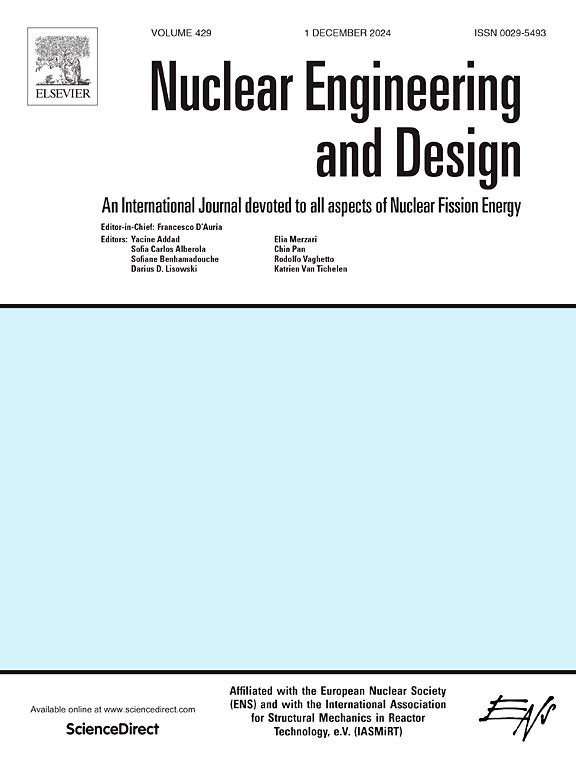Multi-scale contact characteristics and leakage prediction of flange seal based on fractal geometry
IF 1.9
3区 工程技术
Q1 NUCLEAR SCIENCE & TECHNOLOGY
引用次数: 0
Abstract
Flanges serve as the sealing and connecting components in nuclear power plant pipelines and pressure vessels. The contact gaps between flanges and gaskets can lead to flange sealing failure. Therefore, optimal flange sealing surfaces are essential for ensuring the safety and reliability of airtight pipeline systems. This paper examined the flange sealing surfaces in a nuclear power plant. A sealing contact model was established according to the characteristic parameters of the surface contours measured during the experiment, while the finite element method was used to determine the sealing contact characteristics and predict the leakage of the rough sealing contact surface. The results indicated that the surface roughness had a multi-scale effect while the sealing state was related to the sealing characteristics scale. The sealing surface morphology, material properties, and operational conditions directly affected the sealing interface structure and sealing performance. In addition, the contact clearance of the sealing surface decreased in conjunction with increased applied load, normal compression displacement, and surface roughness, while the surface leakage rate increased at a higher surface contact clearance and pipeline conveying pressure.
求助全文
约1分钟内获得全文
求助全文
来源期刊

Nuclear Engineering and Design
工程技术-核科学技术
CiteScore
3.40
自引率
11.80%
发文量
377
审稿时长
5 months
期刊介绍:
Nuclear Engineering and Design covers the wide range of disciplines involved in the engineering, design, safety and construction of nuclear fission reactors. The Editors welcome papers both on applied and innovative aspects and developments in nuclear science and technology.
Fundamentals of Reactor Design include:
• Thermal-Hydraulics and Core Physics
• Safety Analysis, Risk Assessment (PSA)
• Structural and Mechanical Engineering
• Materials Science
• Fuel Behavior and Design
• Structural Plant Design
• Engineering of Reactor Components
• Experiments
Aspects beyond fundamentals of Reactor Design covered:
• Accident Mitigation Measures
• Reactor Control Systems
• Licensing Issues
• Safeguard Engineering
• Economy of Plants
• Reprocessing / Waste Disposal
• Applications of Nuclear Energy
• Maintenance
• Decommissioning
Papers on new reactor ideas and developments (Generation IV reactors) such as inherently safe modular HTRs, High Performance LWRs/HWRs and LMFBs/GFR will be considered; Actinide Burners, Accelerator Driven Systems, Energy Amplifiers and other special designs of power and research reactors and their applications are also encouraged.
 求助内容:
求助内容: 应助结果提醒方式:
应助结果提醒方式:


